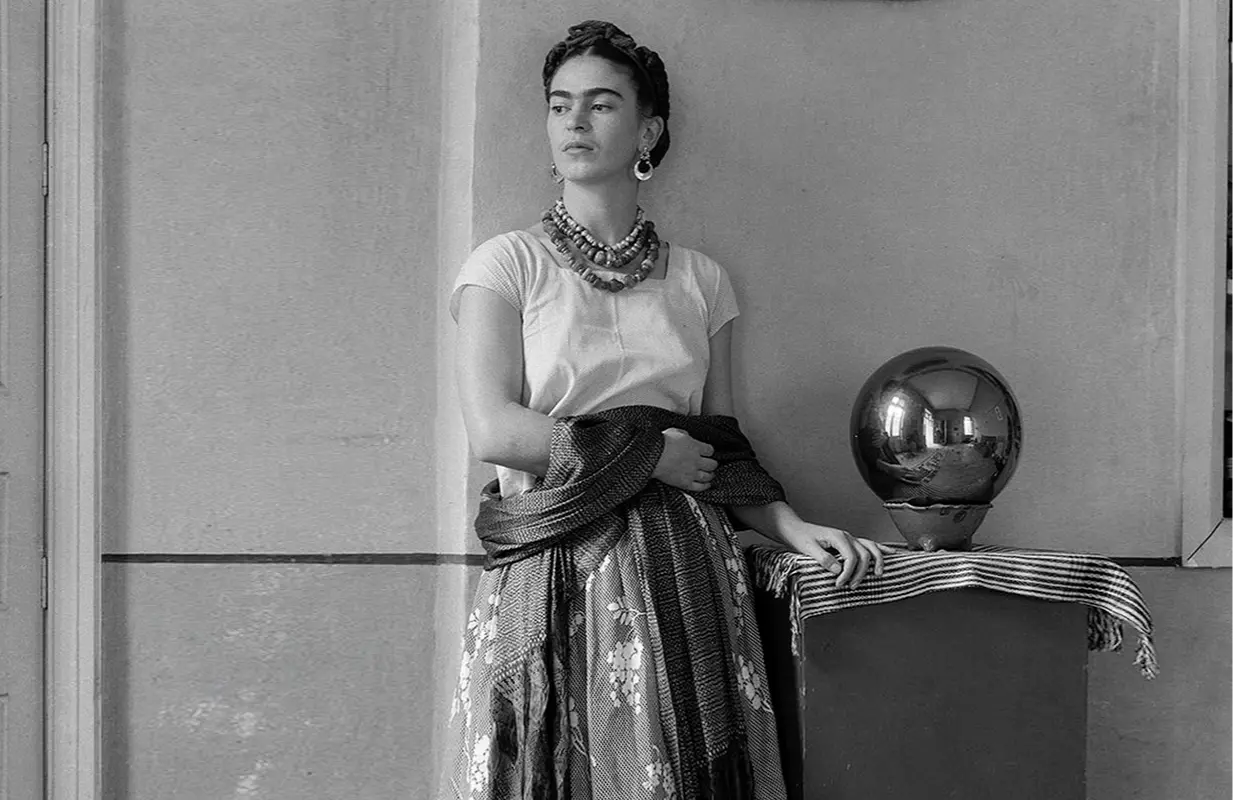Becoming Frida Kahlo Paints a More Complete Portrait of the Mexican Artist
-

Although she was born in 1907, Frida Kahlo liked to say her life began in 1910 with the start of the Mexican Revolution, which eventually gave birth to a “new” Mexico that would have space for artists like herself. When the dust had settled and a new Constitution was in place, Kahlo would embrace the Mexicayotl movement, taking its message well beyond the borders of her native country.
The three-part PBS docuseries Becoming Frida Kahlo begins to weave its tale from a similar place of untapped potential, luxuriating in the days before the bus accident that would leave Kahlo gravely injured and in pain for the rest of her life, when she was one of only 35 women at Mexico City’s National Preparatory School. Even when she was barely engaging with her classes, Kahlo was already making her way to the cutting edge of politics and art, questioning her place in life along with that of others.
Premiering Tuesday night as part of PBS’s Hispanic/Latinx Heritage Month programming, Becoming Frida Kahlo aims to dig deeper than previous documentaries or narrative projects, like the 2002 biopic starring Salma Hayek, to “[strip] away the myths to reveal the real Frida – a passionate and brilliant artist living through extraordinary times.” And there are some revelations, including an intriguing new layer to her relationship with Georgia O’Keeffe, and poignant talking head interviews with Kahlo’s grand-niece and Diego Rivera’s grandson. It otherwise follows the same trajectory that other projects have: tracking the highs and lows of Kahlo’s marriage(s) to Rivera, the couple's political affiliations and rifts, and their fraught connection to wealthy art patrons in the U.S.
But this latest docuseries, from award-winning Rogan Productions Scotland, is able to bring Kahlo’s history to vibrant life once more with music, insights from art historians and biographers, and Kahlo’s own musings. Kahlo had a magnetic presence; when she and Rivera visited New York or San Francisco, people gravitated to her as much as him. It’s difficult to capture even with the archival footage, but a warm, often wry voiceover that reads from her letters — to her mother, friends, lovers, and of course, two-time (and two-timing) husband Rivera — makes it feel as if she is narrating the documentary.
Kahlo became famous for her self-portraits; in 2021, Diego y Yo sold for nearly $35 million dollars, making it the most expensive piece by a Latin American artist ever sold at auction. There’s a grim satisfaction to be found in Kahlo breaking the record previously set by Rivera, considering all he put her through, but the docuseries reminds us that the intricacies of their relationship remain unknowable even now. And, as a Mexican-Indigenous artist, Kahlo sought recognition, not riches — she certainly could never have expected any of her works would go for such a hefty amount, given that she struggled to sell them when she was alive. Her trips to the U.S., where she was often surrounded by the uber-rich, and her Communist leanings also made her increasingly conflicted about wealth.
Becoming Frida Kahlo explores all these contradictions in the life of this “mixed-up mess,” but its most incisive commentary comes near the end, as it reckons with Kahlo’s legacy. She’d always felt she expressed herself best through self-portraits, and late in life, she produced more than ever because she thought they were more likely to sell. Kahlo was right on the money regarding the latter — in recent decades, her face has been reproduced to be sold on everything from t-shirts to keychains. But she had already harnessed the power of iconography while she was alive, letting people project meaning onto her face, all the while keeping her expression unreadable, almost stoic in her own self-portraits. Diego y Yo is remarkable, in part, because it captured Kahlo’s unchecked devastation, her hair wild and Rivera very clearly on her mind. This new documentary reclaims some of that power for Kahlo.
Becoming Frida Kahlo premieres September 19 at 9:00 PM ET on PBS.
Danette Chavez is the Editor-in-Chief of Primetimer and its biggest fan of puns.
TOPICS: Becoming Frida Kahlo, PBS, Diego Rivera, Frida Kahlo, Hispanic Heritage Month, Latinx Heritage Month